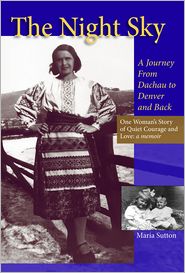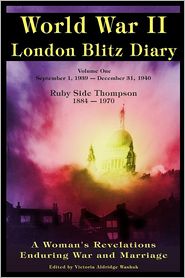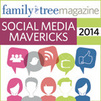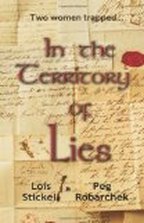 Book Review I dare you to read the first sentence of Chapter 1 in the book In the Territory of Lies by authors Lois Stickell and Peg Robarchek and not buy the book. Stickell and Robarchek got me on the hook with the first line, reeled me in with the first chapter, and before I even knew what happened, I was a dusty fish story by the end of their book. Seriously. In the Territory of Lies, two women are ultimately brought together by genealogy, family history, and the internet. And, oh yeah. A family mystery to solve too. Interestingly, the internet is the main setting for this book, but it's also a character in the book. And I would go so far as to say it's a literary device. [But only because I need to justify all that time and money to have that English degree hanging above me on my wall as I write this review. ;) ] This novel is uniquely written within emails and online message boards, and the 2 main characters are perfectly flawed as all good main characters should be. When I began to read a sample of this novel sent to me by Peg Robarchek, one of the authors, I went from curious to laughing to oh-my-gosh-that's-not-so-funny-anymore by the end of the first chapter. I promptly emailed Ms. Robarchek back, and eagerly explained that I was going to buy it and review it, and she offered to send me a review copy, which I patiently waited for [Read: checked the mailbox twice daily.] until it arrived. Once I began reading it, I never stopped until I finished it less than 24 hours of receiving it. Afterwards, I asked myself why I really clicked with their fabulous book and this is what I came up with:
There are so many facets of this book that genealogy and family history researchers can relate to that even if you're not really into suspense mystery novels that weave genealogy and family history into their plots with deft finesse, you're going to want to read this 253-paged book of awesomeness. I'm Forming a Genealogy and Family History Reader's Group I really cannot say enough good things about In the Territory of Lies. [As if you couldn't already tell.] So. I thought of something cool for us to do.The authors included in the back of their book a reader's guide that contains a list of discussion questions for a reader's group. And we're [me and the mouse in my pocket] are forming a genealogy and family history reader's group. [Ingenious. I know.] One book per month with a discussion done via my Spreecast channel. This way if you don't want to be on video [or don't have the equipment to do so], then you can participate via the chat room on my Spreecast Channel. This platform affords us ways to handle questions for those in the chat room as well. As you've already guessed, I've chosen the first book to be In the Territory of Lies by Lois Stickell and Peg Robarchek. It's available from Amazon.com in paperback and Kindle editions at the product links listed below. If you don't have a Kindle, you can also download the free Kindle app for your smartphone, and that link is located on the product page once you click on one of the image links below. If you are going to participate in the Reader's Group, please contact me, and let me know. This is not a big commitment. If you're there, you're there. If you're not, you're not. This just allows me the courtesy of knowing if I and the mouse in my pocket will be the only ones participating in my Reader's Group Spreecast. The date of which I'll set-up when we get a little closer to the one-month mark. [And don't worry. It won't be Memorial Day weekend. I'm going to be on a beach on an island that weekend. With a book.] Mainly I'm just looking for interest level in this kind of thing. However, the kicker is this: you must purchase the book, check it our from the library, or borrow it from someone AND you must read it before the Spreecast Reader's Group meeting in a little over a month. So? In case you couldn't tell, I HIGHLY recommend this book to everyone. It's that good. ;) You game? ~Caroline
Disclaimer: Peg Robarchek contacted me and provided me a copy of her and Lois Stickell's book to read and to review. All opinions of their book are my own and are not influenced by them gifting me their book. Their book is full of all kinds of awesomeness, and if it wasn't, I wouldn't have said it was. Additionally, I am an affiliate of Amazon.com, and if you click on a link or image advertising this book on my site and buy it [or anything else while you're perusing Amazon.com on that link click], I do receive a small commission for referring you.
24 Comments
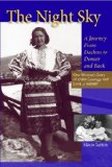 Riveting. The on-the-edge-of-your-seat-I'm-not-putting-this-book-down-come-hell-or-high-water kind of riveting. Written by Maria Sutton, The Night Sky: A Journey from Dachau to Denver and Back memoir is the story of a woman's search for her own family story. A story within a story, if you will, and it reads like a suspense novel. In fact, at times, while reading it, the phrase, "No way! That can't be true..." slipped from my lips. Ms. Sutton had me along side her twisting and turning through the time machine maze with magnifying glass in hand looking for clues, racking my brain for ideas to help, feeling my heart ache with the discovery of some of the answers found, and smiling with tears with the uncovering of other answers. It takes courage for anyone to search for their family history. No, truly it does. It's not all shaking-leaves-oh-look-my-great-grandfather-was-a-private-detective-and-I-guess-I'm-one-too-how-cool-is-that-[silly-giggle] kind of endeavor. No siree. It takes guts to chase those family stories that make us who we are; those stories that are an intrinsic part of us; those stories we yearn to know with every fiber of our being; those stories that make our hearts ache and our bellies burn with the desire to know; those stories that make us weep; those stories that make us lose sleep and don't care; those stories that make us laugh so hard our bellies ache, those stories that make us say, "What the hell?", and those stories that totally leave us speechless. It also takes extreme courage to not ever, ever give up. And Ms. Sutton never, ever gives up until she has the answers. Goodness, I love this about her. And I'm so thankful she shared it with the rest of the world. If you've ever wondered if you could have the courage to find your family stories; if you've ever wondered if you could set out and track down those family stories; if you've ever wondered if you could [or should] track down those family stories that aren't easy or pretty; or if you've wondered if you could share that courageous journey, then you need to read this book. Other reasons to read this book?
Ms. Sutton does an outstanding job telling her story in her memoir, The Night Sky: A Journey from Dachau to Denver and Back, and all I can say is thank you. Oh, and read it! It's available from Amazon.com and BarnesandNoble.com at the links below, and I have it in my 4YourFamilyStory.com Amazon Shop [where there are other books listed that I've read, plan to read, or review soon.] So. What are you waiting for? Go get it and read it. Enjoy! ~Caroline Disclaimer: Maria Sutton contacted me and provided me a copy of her book to read and to review. All opinions of her book are my own and are not influenced by her gifting me her book. Her memoir is an excellent read, and if it wasn't, I wouldn't have said it was. Additionally, I am an affiliate of both Amazon.com and Barnes and Noble, and if you click on a link or image advertising this book on my site and buy it, I do receive a small commission for referring you. It's a Holiday! Today is the birthday of footnoteMaven, editor/publisher of the award-winning Shades of the Departed Online Magazine. The Shadettes and Shades-dudes Staff Writers are pleased to present this Special Birthday Edition of the magazine as a tribute to their dear friend. Long may your tiara sparkle, fM! Visit the blogs linked below following this post to read more and feel free to join the party by posting a tribute on your blog and adding the link in the comments. 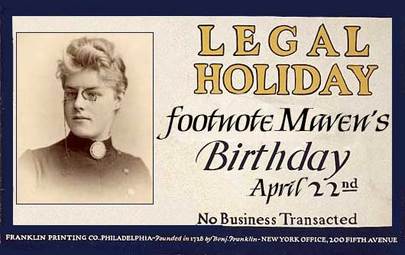 I stumbled upon the most fascinating ephemera cache yesterday in the antique mall. It was behind glass, as all the best things are, and her eyes from her photo sparkled at me, but not as much as the jewels in her tiara did. I had to know who she was. Why was she behind glass? What was so special about her? I asked the vendor if I could please have a look at the ephemera of the beautiful and intriguing woman behind the glass. “Which one?” “The one with the tiara, please.” “Ah, yes. She’s a favorite of mine. footnoteMaven is her name.” “footnoteMaven? That’s a unique name.” As he handed me footnoteMaven’s ephemera he replied, ”She’s a unique lady.” 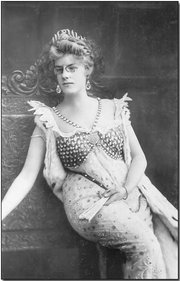 And as I sifted through footnoteMaven’s life, I knew I had to have her. I knew I had to look her up…to find out who she was. I had to own her. “How much?” “Thirty dollars.” “Sold.” I usually dicker on the price a little, but it didn’t seem right to try to talk down the price of the woman with a tiara in one photo and a crown in another. To do so seemed, I don’t know, common. I rushed home, and began to look her up online. Who was footnoteMaven? 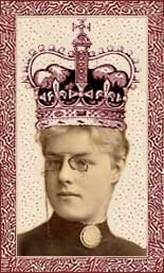 I began to dig online with meager success. She was like a whisper of smoke. I could see her, but not catch her. Then, I found it. In a newspaper article I found a bit about her. She was of royal descent which definitely explained all the sparkly head gear. I mean, who walks around with a tiara or crown without being an actual royal. Right? According to this online tree and family website I found ~ all of which had been completely sourced ~ the Royal Line of Mavens to which she belongs was long and distinguished. One of her great-uncles, Prince citationMaven, had overseen all the citations for the royalMavens until his passing, and because he passed without issue, all of his responsibilities were handed down to footnoteMaven. While she is responsible for all of the Royal Maven family’s footnotes, her specialty, if you will, is photos and their stories. 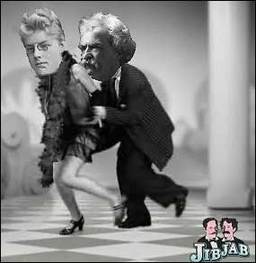 In yet another newspaper article, I read how she had once dated Mark Twain, which I thought quite odd considering various quotes on royalty made by him over the years. However, this tantalizing bit I was able to find certainly explained this photo having been in her ephemera stash. 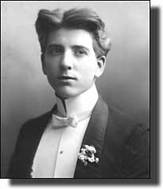 Oh! And look! This photo of a man looking quite dapper from the ephemera cache I bought is identified online as being robberBaron. It seems he was her escort to the iGene Awards ceremony in 2007. Not sure how smart it is to let someone named robber to escort you anywhere, but he sure was a looker. 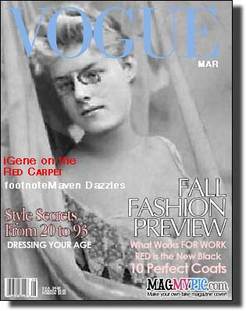 Anywho, I dug a little deeper and found this Vogue cover of footnoteMaven. Wow. She had been on the cover of Vogue! How absolutely stunning! Then I happened upon a recent article about her, and how her mansion [Who are we kidding? It's a castle.] had been broken into, and many valuable items had been stolen. While they had recovered some pieces, the authorities stated that most of her belongings ~ some of which were only valuable to the owner ~ would never be recovered. Was it possible that these pieces of ephemera that I had found and bought were those that had been stolen? [And I wonder if robberBaron has been questioned in the case of footnoteMaven’s stolen ephemera? I definitely would have questioned him.] However, one thing was for sure. I had to find where she was today. It didn’t take me long to find where she was living. [Oh, the joys of the internet.] I’m conflicted by my finds, though. I’m saddened by the fact that she lost her precious items, but I’m selfish as well. I’m actually more saddened by the fact that I know that I’m going to have to do the right thing, and try, at the very least, to contact her and return her items. Perhaps, I’ll gaze a little more at her ephemera. Perhaps I’ll research her a little more. Perhaps I’ll contact her tomorrow. There is one thing I’ve learned by all of this. No one can ever own footnoteMaven. She owns me. And she owns you. She holds us all in captivity, and we are none the wiser as we are entranced by her youthful beauty and sage advice. And her handy dandy footnotes. And the jewels on her crown and tiara. I’m definitely enthralled with those. ~Caroline Credits and Sources: Please note that these photos were used without footnoteMaven's permission. That's right. I borrowed them without asking. [Perhaps robberBaron is in my family tree. Oooh! Does a family member of a Baron get a bejeweled tiara?] Anywho, while I borrowed the images without asking, I'm not common enough to not cite them for goodness sakes.
Please follow the links below for more of this birthday tribute to footnoteMaven: CreativeGene, by Jasia
The Educated Genealogist, by Sheri Fenley The Family Curator, by Denise Levinick Geneablogie, by Craig Manson Healing Brush, by Janine Smith A Sense of Face, by Rebecca Fenning Shades: Birthday Edition -- A Teacup Throne at Moultrie Creek, by Denise Olson What's Past is Prologue, by Donna Pointkouski 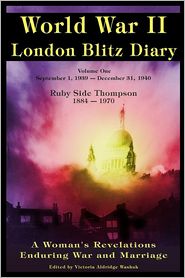 Telling Stories from the Grave Consider this quote: "I want them [the author's children] to be able to look into the mirror of a book, and find me." [Nook Tablet, p.398] If that's not not talking from the grave, I don't know what is. Ruby Alice Side Thompson is the author of the diary entries contained in the books, World War II London Blitz Diary, Volumes 1-4. Only volumes one through three have been published, and I'm in the middle of volume two. However, I wanted to share what a great read this book is. Towards the end of this first volume Ruby mentions why she is wanting to write a book about her life. Though these diary entries are now what has been published via Vickie Aldridge Washuk, Ruby's great-granddaughter. They are the brutally honest accounts of Ruby's life as she saw things as they happened. They are her innermost thoughts, feelings, jubilations, and frustrations. And I found her quote listed above as being a huge eye-opener for me as well as touching. I'm always writing about and, at times, casting judgement on my ancestors through my sarcasm, and I hardly ever think about what my descendants will think about me and my decisions. Will they be able to look at me ~ ugly parts and all ~ and see who I truly was? Without too much derision or sarcasm? [They definitely won't be getting it in diary form as I've not written in one since I was 14 years old, and I've not seen it since then either. Unfortunately.] While I don't always see eye-to-eye with Ruby, I can see that I wish I'd known her in person. I wish that I could have been the one to ask her over for tea and listen to her joyous descriptions of her sewing projects, her opinions of the very progressive books for her time that she read, and her thoughts on religion and politics. She truly was born too early for her time, but because of when she was born and because of the awful situations she found herself in, we are allowed have a small peek into the past from which we can see a family trying to survive the London Blitz during World War II. Luckily for the reader, Ruby has a tight grasp of the goings-on of the war, and she isn't afraid to add her opinions to the mix. Every up and down in her moods and in her life is documented, and her candidness is what makes this book a page-turner. If you have ancestors who were alive during World War II, especially in the UK, then this book is a good place to find how towns, households, and family members lived and what life was like during WW2 during the London Blitz. Though she didn't have the toughest row to hoe during World War II, so to speak, her life ~ understandably ~ was forever affected by it. And these diary entries afford us a trip through time looking at life through Ruby's eyes. World War II London Blitz Diary, Volume 1 is available on Amazon.com as well as from Barnes and Noble. [It's listed in my Amazon Shop under the Books Category.] Though I read Volume 1 on my Nook Tablet, I'm reading Volumes 2 and 3 on my iPhone with the Kindle App. [Slow going on the smaller screen.] Further, while Ruby's diary entries are unedited, her great-granddaughter has written the Forward, Afterword, and has provided family tree information for the reader. I'd like to personally thank Victoria for making her great-grandmother's diaries available to us as they help to fill-in gaping holes in our history textbooks. Also, she maintains a blog for the books so be sure to stop by and enjoy. ~Caroline Disclosure: I am an affiliate of Amazon.com and Barnes and Noble. I purchased the first volume from Barnes and Noble, and then later contacted Victoria to tell her how excited I was to have found it and to begin reading it. She then provided me with volumes 2 and 3 through Amazon.com to review. So. Yes, I'm reviewing these books. Yes, I'm an affiliate of both companies and receive a very small commission for referring these books to you and when and if you buy them through a link that I provide. But my opinions about the books are just that. My opinions. Receiving 2 of the volumes to review has not influenced my review. I think Ruby's story as told through her diary entries is incredible for the genealogy and family history researcher looking for a way to fill-in between the birth, marriage, and death dates of their World War II ancestors' lives. Here is the final installment of my Genealogists [or Family Historians] and the Tech Tools They Use to Research week-long guest post series. I first met Donna Pointkouski at the Southern California Genealogical Society's Jamboree last year, and we totally clicked, which makes sense because we're Pointer Sisters. No, not by blood, but by something much, much stronger ~ 5 letters at the beginning of our names. And I know when I finally start researching that small [and I mean, small] village in what is now Poland, I'm going to have questions for her. We also have another connection. She was a Shades of the Departed digital magazine columnist, and I am one now. So, yeah, we're definitely related. Today, Donna talks about the internet, and her preferred internet places that help her to get her genealogy job done. She is the the author of the blog What's Past is Prologue on which she just posted a phenomenal piece, His Name Was Józef Pater, that I highly recommend you read after you read her piece here, of course. Enjoy! ~Caroline  William Shakespeare* William Shakespeare* Genealogists and the Tech Tools They Use to Research by Donna Pointkouski, What’s Past is Prologue My “Pointer Sister” Caroline has asked me to write a guest post about the “tech tools” I use to research. Technology can mean different things to different people. When I think of tools I use to research, I don’t think of technological gadgets like my digital camera, Flip-Pal scanner, my laptop, or iPad (as much as I love them all). No, when it comes to research, I think of web sites that assist me, and the internet is a technology tool even though we sometimes take it for granted as if it has always been there. But the internet is definitely a research tool! Sites help me drill down through names and data, pry open a family mystery, or nail down that elusive ancestor. In considering the internet as my best technology tool, here are the top sites I use to research: One-Step Web Pages by Stephen Morse – http://stevemorse.org/ Dr. Steve Morse, one of the true Rock Stars of genealogy, has recently experienced a surge in popularity due to the 1940 Census Enumeration District Finder pages he created in collaboration with Joel Weintraub. In fact, the pages are so awesome that both Ancestry and the National Archives sites are using them to help researchers find the right E.D. for the 1940 Census! But Steve’s One-Step pages have helped me for many years, long before the release of the 1940 Census. If you are researching immigrant ancestors who came through Ellis Island (or Castle Garden), the site is a must since the search parameters offer much greater variety than those found on the actual record sites. The One-Step census search tools likewise offer a greater variety in searching. Both helped me find my ancestor’s misspelled entries – I never would have found them otherwise. Księgi Parafialne – http://www.ksiegi-parafialne.pl/ Polish vital records online? Who knew? Sure, this site is in Polish, but you don’t really need to be fluent to navigate. This site lists all of the towns (and corresponding years) in Poland that have either birth, marriage, or death records available ONLINE. Look for the correct province under “wojewóztwa” and see the current list – but be sure to check back if you don’t find what you’re looking for, because they are updated frequently. This site is just the list of who has what, but if a town has records available online a link to the record site is provided. Geneteka – http://geneteka.genealodzy.pl/ Geneteka is just one of a dozen or so sites that have Polish vital records online, but they seem to have the most (at least in the province I’m researching). Once again, it’s in Polish, but once you learn some key words it is not difficult to navigate. I wrote an article about it called Finding Polish Records online over at my blog: http://pastprologue.wordpress.com/2011/01/10/finding-polish-records-online/. Google Books – http://books.google.com/ Although I really don’t know any German or Polish other than some genealogical words, I use Google Books to search for both ancestor and town names for more information. I’ve had great luck finding information on my German ancestors this way – many old German newspapers have been digitized! (Read about Bavaria’s Most Wanted! http://pastprologue.wordpress.com/2011/07/11/bavarias-most-wanted/ ) And the cool thing is that you can highlight a passage and use the built-in “translate” tool. The translation is definitely not as accurate as a “human” translation, but it will give you the general gist of the article (and may provide a few good laughs too). Of course, the main internet research tool I use is a little site called Ancestry.com. Perhaps you’ve heard of it? It’s not free, but over the years I’ve decided it’s worth it as they add more and more records to their collection. Sure, they’re a big commercial corporation, but if the content is good, the digital images are high quality, and the servers are fast, it doesn’t matter much to a capitalist like me. Now you can add your family tree (keeping the living people private) and sync it to your iPad or iPhone – awesome! I appreciate the free sites above, but it’s the big sites like Ancestry that make me wonder how much more quickly I’d have “found” my ancestors if it had existed twenty plus years ago! As the name of my blog says, what’s past is prologue (okay, Shakespeare said it first…). I can only wonder where the internet and technology will take our research in the future with great tools like this already helping us research, document, translate, and communicate in record time (no pun intended)! Here is the 4th installment of my Genealogists [or Family Historians] and the Tech Tools They Use to Research week-long guest post series. Gavin Rymill is a masterful storyteller who can weave historical facts so that they read like a novel. If only all writers of history were capable of this feat, then there'd be more lovers of the study of history. Located in the UK, Gavin is the author of the blog The History Bystander, which, in my opinion, is an excellent name for his blog. Not only is he the history bystander telling his readers the story, but he's so good at it, he allows his readers to be history bystanders right along side of him. And he does no less in his guest post today. Follow along with Gavin as he illustrates how he uses tech to get the job done. You won't regret it. Enjoy. ~Caroline 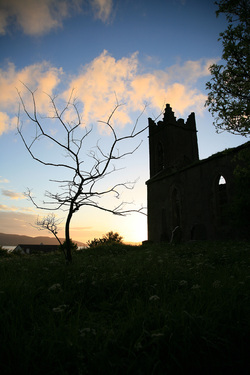 Family Stories Upon the wall of my study hangs a picture. Two girls kneel at the graveside of their father, in the shadow of an ancient and unusual church. The man they mourn is John Palmer who died in 1750 aged 43. He is my great, great, great, great, great, great, great grandfather. The image is fake - created through the wonders of Photoshop - but the church, the headstone and the man himself were entirely real. Thanks to the technological resources available, I got to know him a little, and this is how I sketched out his vanished life. I find it hard to cope with a computer that has only one monitor. For me two is a minimum when doing anything of any complexity. I have three monitors at home which allow me to view several resources at once and cross-reference names and dates without constantly jumping between applications. On the left-hand monitor I keep the Ancestry website open - usually two tabs at least, so that I have my tree handy and their search page ready. The right-hand monitor has a browser window open with FreeBMD and FamilySearch sites. Despite Ancestry now including BMD information, I prefer the simplicity of the FreeBMD search and I like the ease with which I can run down their results pages. Plus old habits die hard. The middle monitor I reserve for Photoshop. In my professional life I use Photoshop every day and despite there being applications better-designed for collating information, drawing diagrams, creating trees and dealing with maps, there is nothing I can work more quickly and easily with. When I'm starting out on a piece of research, I create a big, blank canvas, map out my known family members, and leave lots of space for notes around the edge. On this particular day I am investigating my Nan's Shropshire heritage. In embarking on this line of enquiry, I have already used the FreeBMD information to order the 1848 marriage certificate of her paternal grandparents via the GRO website. This has given me the maiden name Palmer, and the certificate also tells me the bride's father is Benjamin Palmer, a "Waterman." I find him in the censuses via a quick Ancestry search: 1841, a Waterman; 1851, Barge Owner; 1861 Captain of a Vessel. From these entries I get his birth year of 1799 and his birthplace of Broseley. I start to run his name through FamilySearch's parish records looking for his parents. I narrow it down to two results in the right county and then switch to the other vital tool without which much would be impossible: Google Maps. I enter the name of one of the candidate villages and 'get directions' to Broseley. Thirty miles. I try the other one called Much Wenlock. Three miles! They're neighbouring villages. Perfect. I'm happy that I now know Ben Palmer's father was born in 1765. I repeat this with great success for three more generations in a row, each time finding an extremely probable father only a few miles away, and the trail moves a little further south through the county of Shropshire. I arrive at a man called John Palmer, born in 1707, in a village called Ditton Priors. I like the name. I manage another leap backwards and find that John's father Francis was born on my birthday in Ditton Priors in 1683. This is the only ancestor I have ever found to share my birthday. I manage one final leap to find his parents were married in 1671 but thereafter the trail cools off. I leave the line there, happy with four hundred years' progress in one evening. I switch Google Maps to StreetView and have a virtual drive through the winding lanes. The village is centered around crossroads. An old pub sits across from an even older church. I screen-grab the place and drop it into Photoshop alongside the name John Palmer on the family tree I have been building up. I also have a quick Google look for images of Ironbridge - the town which the later Palmer descendants moved towards and ultimately lived in. The waterman lived in an area called The Lloyds and when I return to Google StreetView I see that The Lloyds is a road that runs directly alongside the river Severn, only a short distance from the famous bridge. These men were in the heartland of the industrial revolution. The time for armchair research is over and only a field-trip will satisfy my need to understand the lives of these people better. The indispensable tool for the journey is the iPhone. The Ancestry app allows for quick reference to all the necessary information about the tree, but I also copy over my Photoshop notes page to the phone for reference as I always like to have my tree formatted my own way. The other thing which goes without saying is a good camera. Mine is a Nikon D-75 which is getting on a bit and pretty low resolution but takes a great picture. I collate a set of postcodes, one of each Ancestor, and begin with Ditton Priors entered into the Sat-Nav. And off I go to Shropshire. The weather is beautiful (just as the Weather App promised) and the view is gorgeous as I wind my way down the tiny lanes knowing that the closer I get to the village, the more likely my ancestors knew the roads intimately. Arriving at the crossroads of the tiny village of Ditton Priors, I park up and take some photos of the picturesque place. Eager to investigate the graves, I creak open the gate to approach the 12th century church. Walking around the edge of the stocky building with its tall, pyramid spire, I snap away on my DSLR, and start to look at gravestones as I go. By the time I complete a circuit I am left disappointed that there are no signs of the Palmer name. As I walk the path close to the church I cast my eyes down and I am suddenly struck by a mixture of horror and optimism. The flagstones on which I am walking show hints of lettering. They are not normal paving stones - they are recycled headstones! All the stones in the middle of the path are too worn to make out any words but as I creep towards the wall of the church where the path is less walked, I could read more. I check each one, all the way into the corner, with hope draining away as the numbers dwindled. I reach the very last one, tucked away. It is preserved from the eroding effect of foot-fall but is still incredibly old and hard to read. As I strain against the sun I can make out large and ancient letters ... "... body of John Palmer who departed this life Dece 14: 1750 Aged 43 Years." I grab my family tree and check the name as I simply can't believe my luck. I'm not a mathematical genius but I am able to subtract his age from his death year and sure enough it is the 1707 man I am looking for. The bottom of the stone is badly worn and much of the middle is hard to make out. I have brought with me some sheets of paper and delving into my pocket for a good, old-fashioned pencil I take a rubbing of the stone. It helps tease out a little more of the wording. I can see the words "so must you" and also "do not delay." I pull out my iPhone and type these fragments into Google (in inverted commas to ensure the phrases are searched as a whole) and I add the word "grave" for context. Sure enough the first result reveals it as a known monumental inscription, of which mine is a slight variation. The others on the internet allow me to work out what has been written: "Juft as I am So Muft you be Therefore Prepare to Follow me Repent in time Do Not Delay For in my Prime I was Snatched away" In his prime he certainly was snatched away. Just 43 years old. I sit and reflect on the stone for a while, looking up at the church. It is quite something to read the words chosen at great expense by your ancestors to remember a man they loved. To touch the very stone they would have touched. To sit where they would have mourned. They could not have begun to understand the future in which I live. They could barely have guessed at the industrial changes which were to take place in the hundred years after John's death, but only another hundred years after that would see the dawn of the age of electronics. The world would become filled with gadgets which would seem both incomprehensible and impossible. Tiny, magical devices which would lead me back to Ditton Priors. This is what I do it for. To find them, to remember them, and to connect to them. To learn the names they spoke every day, and find out whose DNA I carry centuries later. After considerable musing on times past and present, I eventually jump back into the car with the next postcode ready. I make my way up towards Ironbridge to follow John Palmer's descendants - but that's a story for another day. Once home I take the photos of the headstone into Photoshop and ramp up the brightness and contrast, allowing for a better view of the lettering. I redraw the entire inscription clearer, as it might have looked when freshly engraved. Sad at the fact the headstone had fallen and been moved, I decide to Photoshop it back into a standing position outside the church. And after a little image-searching for some suitably sad-looking girls, a picture is formed to show a sad scene. It's not very realistic, but it is evocative. And so it ends up on my wall to remind me of that little village in which John Palmer lived and died. As more resources become available online, I hope to find out more about his life. I want to investigate the tantalising prospect that John's great, great grandfather may have married in Boston, Massachusetts only 17 years after the Pilgrim Fathers landed in Plymouth. Is it possible I will find my distant cousins in the Palmer family still living in Massachusetts today? As we leave those simpler times behind, we also enjoy new surges of technology which makes accessing the past easier. I can't wait for the next wave of innovation which will take us even closer to our ancestors and the lives they lived. Here is the 3rd installment in my Genealogists [or Family Historians] and the Tech Tools They Use to Research week-long guest post series. Andrew Martin is the author of History Repeating the Family History Blog. I believe 3 years ago he was one of the first Twitter accounts from the UK I followed and one of the first UK blogs I read. I distinctly remember being quite impressed with his website and research. In his guest post today, Andrew does a wonderful job describing how he technology can be used to have family history find you. So enjoy his guest post and find out how he uses tech to get the job done. ~Caroline 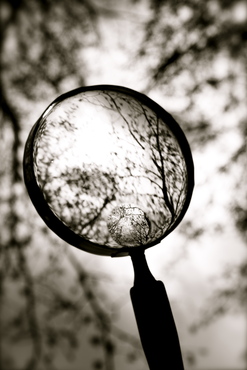 5 Ways To Get Your Family History To Find You Online We lead busy lives, meaning that our time to research can be quite limited. I find it hard to juggle my research around the other things that I do during my free time. I began publishing my family history research online in 1998, and I’ve found that this has vastly helped it by attracting other family historians researching the same or similar branches, who are then able to help correct or fill in parts of my tree. Putting your family history online can open the door of opportunity. Suddenly an international audience can read your work and they can contact you to offer more information, photos, corrections, or even to reunite long-lost branches. This has helped me to smash through those dreaded genealogy brick walls, and unravel mysteries of sudden disappearances due to emigration. So to help you benefit from this more ‘community’ approach to research, I’ve picked out five online tools that I use to help my family history find me: Blogging Blogging is by far the best platform on which to share your own family research. Most blogging tools are free (like Wordpress, Blogspot and Tumblr) and they are also relatively easy to use – without having to download software or subscribe to some complicated and expensive packages. Most blogging tools allow you to blog on the go, so you could even blog from an archive on your smartphone to share a real-time eureka moment, or blog a photo of an amazing headstone during a graveyard search. Blogs work well with search engines like Google and Bing, and the more established your blog gets (the older it is, and the more blog posts you publish), then the more likely search engines will lead people to your research. So by showing off your latest success, or by publishing your latest search conundrum, you stand a good chance that someone will find it, read it, and leave you a comment that could give you that new lead to break through that research brick wall. Think of your blog as the ultimate read – this is where you should regularly put in some hard work. You can write short or long posts, general or really niche posts – it really shouldn’t matter as long as you use the blog’s own ‘tag’ tools to help readers and search engines find your post. The 140-character, ‘micro-blogging’ tool Twitter is always hitting the headlines, and this is because it is easy to use, short in content, and delivered in real time – resulting in some quickly evolving subjects being widely discussed by millions of people around the world at any one time. Initially I was hesitant about how useful Twitter was going to be for genealogy, but I’ve since found it to be an excellent tool for networking with local and international experts across a range of subjects. Twitter’s growing genealogy, history, architecture and archaeology users are a friendly bunch, and in my experience they are more than willing to help others find answers. Other Twitter users have helped me to decipher poor handwriting on death certificates (revealing a cause of death), they’ve helped me date photographs and find records, and they have helped me to find locations that have long since vanished from modern maps. I’ve often discovered local genealogy and history events through twitter, and by using twitter whilst at events like Who Do You Think You Are? In London, I’ve managed to meet up (in real life!) with fellow genealogists – which really puts the ‘social’ into ‘social networking’. With your blog as the ultimate read, your Twitter account is the ultimate net with which to catch your readers and bring them to see your research. This is why a blog is a crucial first step. Forums Forums have been around for many years and these were my first port of call when starting out with my genealogy. RootsChat.com and RootsWeb.com have been incredibly helpful with finding answers to questions. My research has certainly benefited from the kindness of fellow users of both of these who seem ready to freely help where they can. Of course, the more open you are to helping others with their research, then the more likely you will be able to call on a favour at a later date. I have often received look-up help from people who have access to local knowledge or records in other counties and countries outside of the one that I’m researching and living in. Forums are also great environments to bounce your latest family tree research theory and gain opinions from other interested people who have more than likely been there before. Flickr Flickr has been established for many years now, and is the perfect place to upload your photographs. You can even use Flickr as the space where your photos are stored and then feed them through into your blog or website using their embeddable ‘widgets’. I’ve been putting my family photos into collections on Flickr for some time and it always leads to people posting comments in response, and leading to email or offline conversations about the places or families. You can also pin your photos onto maps to help people find them. Like blogs, Flickr is very search engine friendly, so if you remember to add ‘tags’ to your images, then you’ll end up with lots of people looking at them. Recently, some of my photos on Flickr that were taken at early 20th century weddings, were used (with my permission) in an online fashion gallery after being seen by London’s Victoria and Albert Museum. Pinterest, launched in 2011, is a new tool that a genealogist can seize to their advantage. Like Flickr, it’s a great place to find, share, and discuss images. You can ‘pin’ images you like on to your own ‘pin boards’ so that those following you can see them. Alternatively, you can ‘re-pin’ images that you’ve seen – instantly sharing them those who follow you. Pinterest is currently riding the wave of popularity, meaning that a vast number of people are using it right now. It is commonly used to showcase images of baking and other home-crafts, but now is a great time to add your family photos to begin conversations with people and maybe find those long-lost relatives. Essentially, with all five of these tools, the more you put in, then the more you’ll get out. If you can invest some time to regularly put content into one, some, or all of the above, you will find that the number of people coming forward with information will increase. I’ve managed to receive photos and documents, met distant relatives, solved many seemingly impossible puzzles that had baffled me for years. None of this would have been possible without the kindness of the enthusiastic strangers (just like you and I) that use social networking tools. BIO Andrew Martin is a 30-something British genealogist, who has been hooked on researching his family history since 1995, when he was given a scruffy hand-drawn tree of names he didn’t recognize and a few old photos. He owns www.familytreeuk.co.uk website which focuses on his family in Cambridgeshire, England – where his family have lived since at least 1589. He also writes for www.andrewinthegarden.com and www.onehundredwordsmagazine.com. Welcome to the 2nd guest post in my Genealogists [or Family Historians] and the Tech Tools They Use to Research week-long series. Lisa Alzo is a well-known lecturer, author, and blogger. I first met her online on her blog, The Accidental Genealogist. I loved the way she wrote, and we had a good online rapport. Then I met her in person for the first time last year at the Southern California Genealogical Society's annual Jamboree conference where we shared laughs and appetizers with the girls. Then we met up again last year at the Federation of Genealogical Society's conference in Springfield, Illinois where more laughs and dinner this time was shared with the girls. Then we did it again at RootsTech in Salt Lake City. Genealogy, laughs, good food, and even better friends ~ does it get any better than that? [Um, no.] She's also an outstanding speaker, and I highly recommend if you ever get the chance to hear her speak, to do so. You won't regret it. I highly respect Lisa, and I'm so glad she agreed to share with y'all the tech she uses to get the genealogy and family history job done. Lisa talks about her favorite apps for writing about her family history and the strange phenomenon called GADD. I think I suffer from it. A lot. Now what was I talking about? Oh yes. Enjoy Lisa's post on apps. ;) ~Caroline 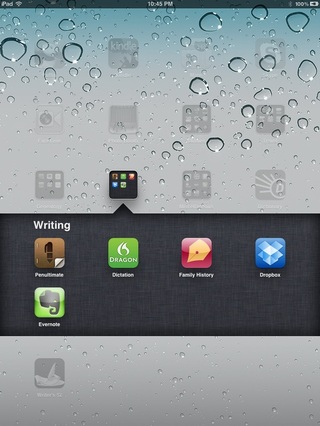 Screenshot courtesy of Lisa A. Alzo. Screenshot courtesy of Lisa A. Alzo. An “App for That”: My Remedy for Genealogy “ADD” By Lisa A. Alzo, M.F.A. When Caroline asked me to write a guest post on “Genealogists [or Family Historians] and the Tech Tools They Use to Research,” I wasn’t exactly sure what tool or tools I would choose to focus on. While I use many of the popular online tools and websites that other genealogists do, I don’t really consider myself a “genea-techie”. The truth is, when it comes to tech tools I confess that I suffer from GADD (Genealogy Attention Deficit Disorder). I tend to try new sites and tools as they come out, but there are probably only a handful that I stick with for a long period of time and I usually jump back and forth between several software programs, research trackers and writing tools. In addition, I was a writer before I was a genealogist (this is the reason I call my Blog “The Accidental Genealogist”), and I consider myself more of a story gatherer as opposed to a name collector, so I’m always looking for the best ways to record, store, and share information. For this reason, I tend to be drawn to those tech tools that make my writing life easier. Lately, this means Apps that I can download and use on my iPad2. Here are a few of my favorites: Dragon Dictation – I use a full version of Dragon Naturally Speaking on my desktop computer but I like the free iPad version for dictation notes or short text for articles or book chapters. Dropbox – This is the one application I can’t live without for my writing and my genealogy. I store just about everything in Dropbox—document files, scanned images, PowerPoint presentations for my speaking engagements. I used it so much that I purchased additional storage capability. This application has saved my behind more than once, and having it on the iPad enables me to access all of my important files when I travel and I don’t have to remember to bring a thumb/USB drive with me. Evernote – While I admit I don’t use Evernote particularly for my genealogy research, I do use it for writing. I like being able to clip URLs /pages of research materials that I need for my articles and books. Sometimes I use the Text Notes feature to just type in text that I want to save rather than using Pages on my iPad. I also like the Voice Note capabilities for audio notes or recording interviews. The best part is that I can sync all of my notes and notebooks across multiple devices including my iPad. Penultimate - It costs just $.99 cents but I like this little app and use it to take notes, keep sketches, and for mindmapping (using diagrams for brainstorming ideas for articles, blog posts, books, and presentations). Writing Your Family History App ($5.99) by the Professional Writing Academy. For about the cost of specialty coffee drink, this little app packs a pretty good punch and I use it to flesh out ideas for writing ancestor profiles, magazine articles and family history books. The question and answer format helps me to think a project through and I also like all of the links to online resources. What I like about these five apps is I can use some of them or even all of them together for a project. I can sketch out an idea with Penultimate, use Evernote to store research materials or notes for it, use Dragon for dictation of the text, the Writing Family History App to explore the idea in more detail, and Dropbox to store pieces of the project, drafts, and final text. When it comes to technology, I prefer “plug and play” types of devices and applications that are easy to download/install and have a very small learning curve. Admittedly, patience is not one of my strong suits. I am always working on deadline and I don’t have hours or days to spend learning how to use a new software program or online tools. I need to gather my research materials and turn out copy pretty quickly. This is why “apps” work for me, and I will continue to try new ones to add to those I use on a regular basis. Disclosure: I am not an employee or affiliate of any of companies who produce or sell any of the aforementioned apps and am receiving no monetary or other compensation for this post. I have chosen to write about these products simply because I like them. 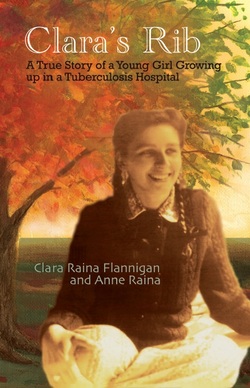 If you haven't come across one yet in researching, you will. You might be too busy at the time to ponder it much. Perhaps years later when you decide to tackle that paper monster pile on top of your desk, on top of your file cabinet, and on your floor, you might come across them again.Or perhaps, you just haven't been researching long enough and you've been collecting names, and now your ready to find stories. And then it hits you like a ton of bricks. Your ancestor, your loved one, your distant relation died from tuberculosis. And you begin to wonder what their life was like with tuberculosis or consumption as it was once called. I've seen it as a cause of death several times in my family tree, but my recent one that I encountered was my Big Paw Paw's 1st wife, Emma Rosin. She passed away after she divorced Big Paw Paw and after she had remarried again. She passed away from pulmonary tuberculosis 11 Mar 1931 at the age of 38 years in the Grace Lutheran Sanitorium in Schertz, Texas. I was saddened by this even though she wasn't my grandmother [my grandmother was wife number 4], but in researching her, I became, um, attached to her. To the best of my knowledge, she never had any children, and her death certificate indicates she had been sick with tuberculosis for 3 years. She was one of those family tree orphans who I adopted. [You can read more of her story in my blog posts on Family Stories: Smiling Big and Laughing Hard and in How a Baker Led me to Ducky Hour.] So what's my point? What does this have to do with genealogy and technology and researching and sharing your research? Well, I think it's really important to understand what our ancestors, or whomever we research, were going through in their lives. So many in the past died from tuberculosis or had to receive treatment for long periods of time in sanitoriums. What was that like? What were their lives like as they battled their disease? Wonder no more. I stumbled upon a heart-warming and, at times, heart-breaking, book written by a girl who practically grew up in a sanitorium battling tuberculosis in Ottawa. You see, she kept this diary and then with the help of her sister, Anne Raina, it was published posthumously. Her name was Clara Raina Flannigan and her story is called, Clara's Rib: A True Story of a Young Girl Growing up in a Tuberculosis Hospital. It touched me deeply as I have a personal reference point for diseases that attack families as tuberculosis attacked Clara's family, and it hit close to home. And did I mention it reads like a novel? I literally could not put this book down once I began. Clara's raw honesty and keen insight grabs you and will not let you go. Ever. After reading it, I wanted more. [And lucky for me her older sister wrote a book about another dark time in their family's life that Clara refers to, but gives you absolutely no details about, which totally left me hanging until I read the back of the book and found there's another book.] If you've wondered what life was like for your ancestors who were stricken with any disease, but especially with tuberculosis, then I strongly encourage you to read this book. I challenge you to read Clara's story ~ her life ~ through her eyes as she was experiencing it. Wait. Scratch that. Everyone needs to read this book. It's that powerful. It's that good. Besides, don't you wanna know why it's titled, Clara's Rib? [You know you do.] Stop collecting names and dates. Start finding out what your ancestors' lives were like. Start walking in their shoes. I promise you won't ever be the same again if you do. Now, getting this book is not as easy as you may like, but as with all the best things in life, it's worth the hoops you'll jump through. It's available from the author only. I discovered her and her book from an interview she did for a newspaper, and it showed up in a Google Alert in my email. And, naturally, I had to have the book, but once I started looking for it, I couldn't find it on Amazon or Barnes and Noble. So I Googled it and found her website. And because I was so moved by her sister's story as revealed in her interview and on her website, I contacted her through her website. By this point I had to have the book. She confirmed that her website is the only place you can buy her book, but, hey, she signed it for me. And? Then her sister's story rocked my world. And now I'm sharing it with you so it can rock your world. [And then I'm gonna buy her other sister's book. So it can rock my world too.] It's a roller coaster ride that's well-worth the price of the ride. ~Caroline Note: And then I found Anne Raina did an interview about Clara's Rib and it's on YouTube but it has some spoilers in it. But those spoilers are the same as the spoilers in the introduction of the book, so...: Note: I am in no way affiliated with the Raina family. I happily purchased the book from Anne Raina and anxiously checked my mailbox daily for her sister Clara's story. My opinions and review of her book are entirely my own. If you buy this book, I get the satisfaction of knowing that your world is gonna be rocked. Like mine. And that's it. Susan Clark is the author of the blog Nolichucky Roots. I first met Susan at the FGS Conference in Springfield, Illinois last year, and I have enjoyed following her blog for a while now. I love when Susan participates in the 48 Hour Ephemera Challenge because I know we are going to get sound analysis of the problem and excellent suggestions for whomever we are searching. Her contribution to the Tech Researchers Use to Get the Job Done Guest Post Series discusses wildcard searching, and how invaluable it has become in researching her Eastern European roots. Enjoy! ~Caroline Searching Outside the Box 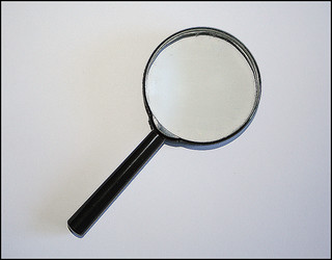 *Photo Credit: Some rights reserved by Jeffrey Beall *Photo Credit: Some rights reserved by Jeffrey Beall When Caroline asked me to write a guest post on the tech tools I use in my family history research several ideas ran through my mind. This is not unusual. Lots of things run through my mind, but most get away before being caught. My research efforts the last few years have been internet based. I'm beginning to get back out on the road starting to use cameras, GPS, portable scanners and mobile devices. I love them. But what has been most valuable to me with internet research has been thinking outside the box when it comes to search terms. Get Wild I've needed to get very creative in order to catch sight of my elusive relatives and capture their online information. Half my tree is made up of lovely 20th century immigrants with lovelier Eastern European names. Names they, as well as many census enumerators and immigration officials, had trouble spelling consistently in English. Wildcards, those wonderful symbols that replace one or more letters in a name, have been my salvation. The asterisk will replace up to 5 letters on Ancestry's search engines. A question mark will replace a single letter. I looked repeatedly for my great-aunt Susanna Pereksta's immigration records. I found nothing until Ancestry.com and Steve Morse's superb One Step pages added the Hamburg Passenger Lists, 1850-1934 database. Using “Sus* Per*a” as a search term I found her indexed as Susie Perexta leaving Hamburg on Feb. 1, 1911. Those German indexers were pretty good spelling the Eastern European names. Not so for the American indexers. With a date I was able to search the other databases for an arrival record. When I searched for women with a surname of “Per*a” arriving in February, 1911 I found her. She was indexed as “Luria Peresla” in Ancestry.com's Philadelphia Passenger Lists, 1800-1945 database. I love wildcards. Note that I had to drop her first name to find the record. Wildcards work differently with Google and other internet search engines. The easiest way to find out what wildcards work with the engines you use is to search! A search of “wildcard search” and the name of the engine I want to use gives me a quick rundown of the options. Google, for instance, does not support the asterisk and question mark symbols in the same way as Ancestry.com. But you can use an asterisk to replace entire words in a phrase or put a search term in quotation marks to search for an exact phrase. Before Google Books revised its format and restricted searches of many books, I was able to confirm that a Margaret Meredith living in Baltimore in the early 1800s was the widow of one of my husband's distant great-uncles by searching for her with a business name “ “Thomas Meredith * Co.” Margaret Baltimore.” I used the asterisk to allow for and or &. The search led me to a case cited in Monongalia County (West) Virginia, Records of the District, Superior, and County Courts: 1813-1817 by Melba Zinn (Heritage Books, 2009) where Margaret Meredith was named as a partner in the firm after the great-uncle's death. Get Narrow Another successful search strategy I've used has been to look for names or phrases that are more unique to narrow a search field. I found one of my Pereksta relatives in the 1930 census by searching for their youngest child at the time, their 2 year old daughter Olga. She turned up indexed as Olga Pereskata. Her father was indexed as John Pereskith and had eluded my previous searches. My husband's ancestor Joseph Jones proved much easier to find when I searched using his daughters' names – Cansada, Brazilla and Talitha. Their names were rarely spelled the same way twice, so I again relied on wildcards. But I got far more targeted results than typing great-grandpa Joe's name. I'm currently obsessed with searching Old Fulton NY Postcards after one of Caroline's 48 Hour Ephemera Challenges sent me there hunting for information about a dude with a long beard. “Dude with a long beard” didn't get me much, but I realized the collection of early 20th century New York newspapers might have information about my immigrant relatives. This website (as do many others) uses OCR (Optical Character Recognition) software to search digital images of the newspapers which can get a little funky. I searched for a family named Tanch and got hundreds of real estate listings for small ranches. Not especially useful. My Sidor/Sedor/Szidor/Citar cousins can be a challenge since they took several generations to settle on a spelling. Narrowing the searches to a specific city and date range helped, but it wasn't until I added the name of their church that I got useful results – and those results were a goldmine of information about the immigrant community. I stopped using surnames altogether and settled on searching for “St. Michael's” in Binghamton and for a given year. I found wedding announcements, death notices, youth group and fraternal organization activities. I got a sense of the church community that defined my grandparents lives in the United States. I've used the same strategy to narrow newspaper searches for my Smith in-laws. Even in a small town there are lots and lots of Smiths. Lots. Adding "Dr." or "Catholic" or a street name to the searches has yielded far more useful results. So get wild, but also get narrow when searching for your kinfolk. Add the name of your father's high school, your grandmother's business, the name of your cousin's college band or prize steer to your search terms. You may be amazed at what you find. Susan Clark *Photo Credit: Some rights reserved by Jeffrey Beall |
Categories
All
Archives
February 2017
|
|
© Copyright For Your Family Story 2016 - All Rights Reserved
|

